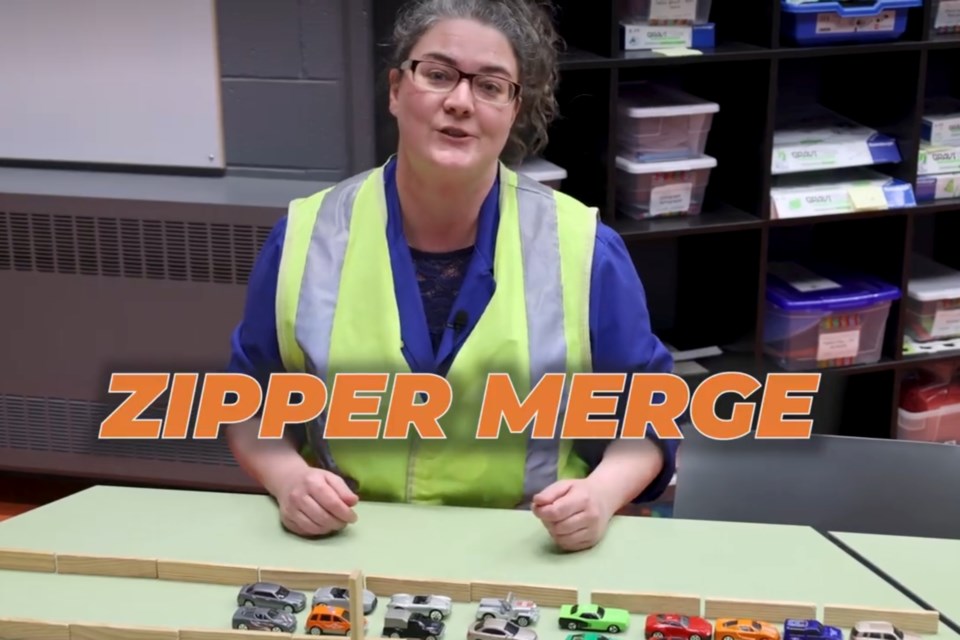With construction beginning on the Bridge of Nations a few weeks ago, traffic has been backed up for long stretches along single lanes of traffic.
But, that shouldn’t be the case.
Motorists should be using all four lanes of traffic, merging at the moment their lane ends.
It’s called a zipper merge, and despite repeated attempts over the course of many years, and the fact it's an incredibly simple concept, a lot of Sudbury motorists still aren’t getting it.
Traffic would move more quickly if more motorists followed the advice of experts and used a zipper merge.
Joining the effort to educate the public, Science North issued a video by chief scientist Melissa Radey earlier this week in their “Science Explainers” series highlighting the zipper merge, available for viewing here:
In the video, Radey explains that there are two merge techniques, including the early merge and zipper merge.
The early merge has motorists merge as soon as they see their lane is about to come to a close, at varying locations along the road.
“People think that the early merge is courteous, but there isn’t really any way to determine fairness,” Radey said. “It’s inefficient because it doesn’t have defined rules. It leads to a really long bottleneck and ambiguous, chaotic merging.”
The zipper merge has clearly defined rules, wherein vehicles proceed along all available lanes until the point a lane ends. At that point, vehicles in the lane that ends are allowed to merge in one vehicle at a time, between vehicles in the proceeding lane.
“It only works if everybody does it,” Radey said, noting the bottleneck is shorter with a zipper merge. “Just keep driving in your lane until you reach the merge point, and take your turn.”
Greater Sudbury Police Service shared Radey’s video on Facebook, posting, “If you want to be a smart and courteous driver, remember the late or zipper merge. Don't be an early merger, be a zipper!”
Traffic is intended to move at a consistent speed in a zipper merge, making it safer for drivers and avoiding heavy congestion by up to 40 per cent, according to the Minnesota Department of Transportation, which lists additional benefits as including:
- Reduces differences in speeds between the two lanes
- Creates a sense of fairness and equity that all lanes are moving at the same rate
Their advice for a zipper merge is: “As you see the ‘lane closed ahead’ sign and traffic backing up, stay in your current lane up to the point of merge. Then take turns with other drivers to safely and smoothly ease into the remaining lane.
